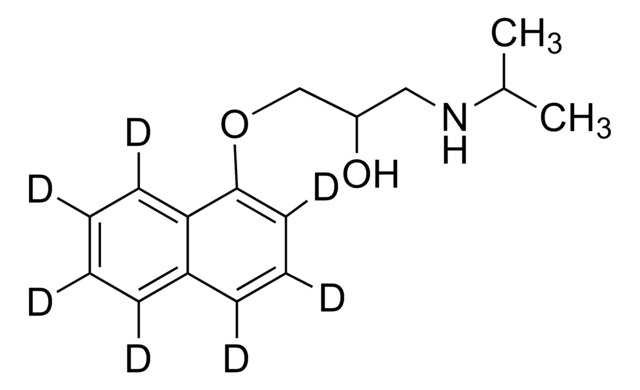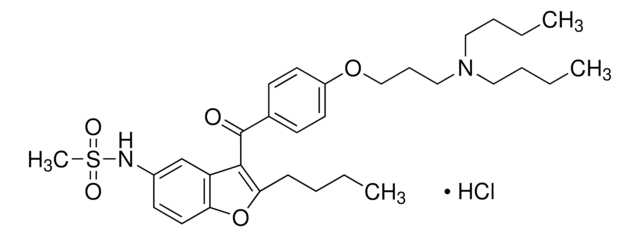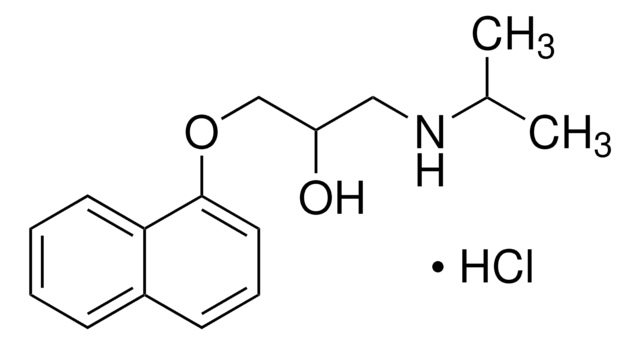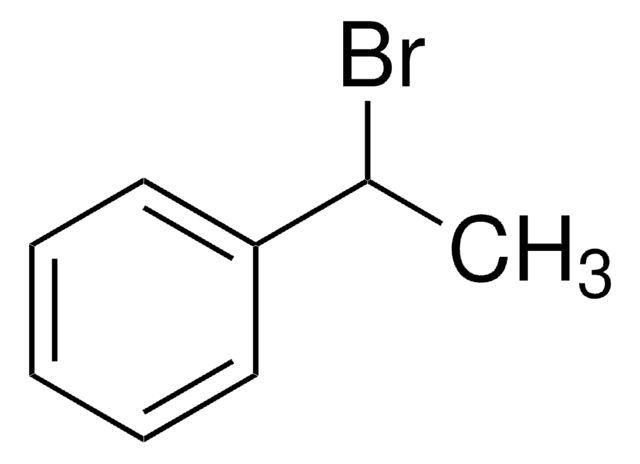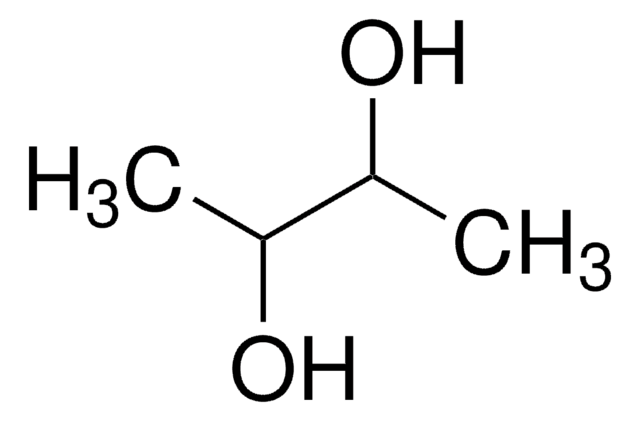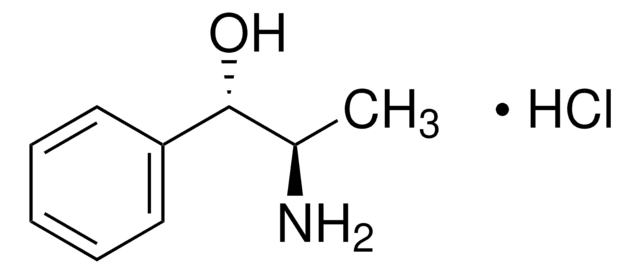00881
(±)-4-Hydroxypropranolol hydrochloride
analytical standard
Synonym(s):
1-[(4-Hydroxy-1-naphthyl)oxy]-3-(isopropylamino)- 2-propanol hydrochloride, 4′-Hydroxypropranolol hydrochloride, 4-{2-Hydroxy-3-[(1-methylethyl)amino]propoxy}-1-naphthalenol hydrochloride
About This Item
Recommended Products
grade
analytical standard
Quality Level
assay
≥98.5% (AT)
≥98.5% (HPLC)
shelf life
limited shelf life, expiry date on the label
technique(s)
HPLC: suitable
gas chromatography (GC): suitable
application(s)
forensics and toxicology
pharmaceutical (small molecule)
format
neat
storage temp.
2-8°C
SMILES string
CC(C)NCC(O)COC1=CC=C(O)C2=CC=CC=C21.Cl
InChI
1S/C16H21NO3.ClH/c1-11(2)17-9-12(18)10-20-16-8-7-15(19)13-5-3-4-6-14(13)16;/h3-8,11-12,17-19H,9-10H2,1-2H3;1H
InChI key
ROUJENUXWIFONU-UHFFFAOYSA-N
Related Categories
Recommended products
wgk_germany
WGK 3
flash_point_f
Not applicable
flash_point_c
Not applicable
Choose from one of the most recent versions:
Certificates of Analysis (COA)
Sorry, we don't have COAs for this product available online at this time.
If you need assistance, please contact Customer Support.
Already Own This Product?
Find documentation for the products that you have recently purchased in the Document Library.
Our team of scientists has experience in all areas of research including Life Science, Material Science, Chemical Synthesis, Chromatography, Analytical and many others.
Contact Technical Service
